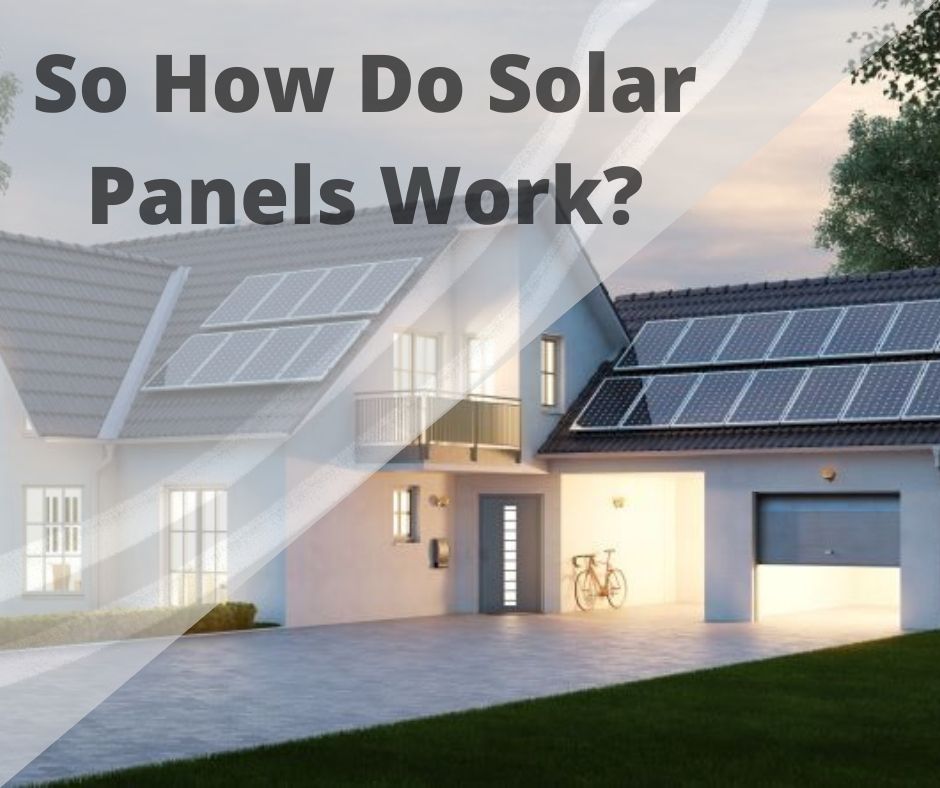So how do solar panels work? You might ask!
In this article we are going to explain how solar panels work, the science behind this amazing tech and the benefits to your household and the planet.
The basic steps in solar energy generation are as follows:
- Sunlight shines on to the solar panels and produces an electronic field.
- The electricity produced is then directed to the edge of the panel and collected by a conductive wire.
- The electricity is then passed to an inverter via the conductive wire, it is then transformed from Direct current (DC) into Alternate current (AC) which is used to power most buildings.
- Now a second wire transports the electricity from the inverter to the breaker box (which is also called an electric panel sometimes) and then it is distributed throughout the household.
- Any surplus energy that is not used by the household whilst the system is in operation. Will be passed back to the grid and the meter will in fact run backwards as it credits your household for the extra energy.
If you would like to learn more about Solar PV Systems follow the link here.
The Science Behind How Solar Panels Work
Most people have a basic idea of how do solar panels work. We all know that they convert light from the sun into electricity for our home.
They can achieve this even on cloudy overcast days. As the panels only require day light not direct heat from the sun.
This is great news for UK homeowners at least.
Solar panels work by converting the light produced by the sun. The sunlight shines on to the panel and the clever photosynthesis system goes right to work.
The panel is made up of lots of smaller units inside. Each of these modules is made up of hundreds of cells. These cells are known as photovoltaic cells.
Each cell is made up of essentially of two layers of conducting material sandwiched around metal or other conductive materials.
Silicon is most commonly used for this material however silicon alone is not enough, so other materials are mixed in, too.
The top layer of the module receives a negative charge from the sunlight hitting the panel. Whilst the bottom layer gets a dose of boron to create a positive charge.
Now as sunlight hits the panel the electrons from the phosphorus are jolted free and an electrical field is created.
To find out more follow the link here
How to find the right Solar Panels for your house?
Now you have the idea of, how do solar panels work you may have decided that going solar is the right choice for your household.
If so, the next step is to decide whether solar panels are suitable for your household. There are a few things to take into consideration at this point.
The direction of your roof is key. A south facing roof with no obstructions such as trees or other buildings to shade your roof space is also very helpful in gaining the most from your solar PV system.
The size of the system required will also vary dependent on the size of the household and the average energy consumption.
We would recommend you get an energy efficiency survey done before you make any final purchases to make sure you get the correct system for your household.
Contact Us
Please do not hesitate to contact us if you need any advice in the future.
We will be happy to answer any questions you may have.
Click the link here to contact us today.



